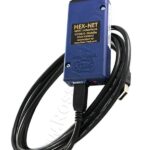This guide explains how to use a VCDS (Vag-Com Diagnostic System) to check and manage your VW Golf or Jetta’s Tire Pressure Monitoring System (TPMS). We’ll cover resetting the TPMS light, activating the hidden indirect TPMS, and potentially swapping from a direct to an indirect system.
Understanding VW TPMS Systems
Volkswagen vehicles utilize two main types of TPMS:
- Indirect TPMS: This system, standard on some models from 2007 and 2011 onward, relies on the ABS wheel speed sensors. It detects tire pressure drops by measuring variations in wheel diameter. A smaller diameter suggests a loss of air pressure.
- Direct TPMS: This system uses wireless sensors within each tire to directly measure pressure and temperature. This data is transmitted to the car’s computer. Direct TPMS is generally more accurate but requires additional sensors and battery replacements.
Required Tools
- Ross-Tech VCDS Cable and Software
- Tire Pressure Gauge
Resetting the TPMS Light
For Direct TPMS:
- Inflate all tires to the recommended pressure (found on the driver’s side doorjamb or in the owner’s manual). Use a tire gauge to ensure accuracy. You may need to slightly overinflate and then deflate to the correct pressure. Never exceed the maximum cold pressure listed on the tire sidewall.
For Indirect TPMS:
- Inflate tires to the recommended pressure using a tire gauge.
- Press and hold the dedicated TPMS reset button, usually located on the center console or in the glove box. This recalibrates the baseline values for the ABS module. If your car doesn’t have a physical button, you can reset the system with VCDS (see instructions below).
Activating the Hidden Indirect TPMS with VCDS
If your VW has a compatible ABS module but lacks the indirect TPMS feature, you might be able to activate it with VCDS. A retrofitted reset button is recommended but not essential for VCDS users.
-
Connect your VCDS cable to the OBD-II port and launch the software. Ensure the cable’s green LED is illuminated.
-
Select “Select” to access control modules.
-
Choose “ABS Controller”.
-
Click “Coding”, then “Long Coding Helper”. Crucially, record your original coding before making any changes.
-
Navigate to Byte 16.
-
Enable “Bit 2 – Tire pressure monitoring (TPMS/7K6) installed”.
-
Exit the Long Coding Helper. The new code will appear under “New Coding.” Click “Do It!” to save.
-
After activation, the TPMS light should briefly illuminate upon ignition. The system requires about an hour of driving, including highway speeds, to adapt fully. TPMS readings might be unreliable during this period.
Manually Resetting TPMS with VCDS
If you don’t have a TPMS reset button, use VCDS:
- Access the ABS module in VCDS.
- Go to “Basic Settings”.
- Select “Group 042” and click “Go!” to reset.
Swapping from Direct to Indirect TPMS (Advanced Users Only)
This procedure is complex and potentially requires disabling the direct TPMS first. Disclaimer: Tampering with safety systems may be illegal. Consult local regulations before proceeding. A functional TPMS is crucial for safety.
Instructions for disabling the direct TPMS and enabling the indirect system involve modifying coding in the “CAN Gateway”, “CECM”, and “ABS Controller” modules within VCDS. This requires careful attention to detail and a thorough understanding of VCDS functionality. Refer to detailed VCDS documentation or consult a qualified technician before attempting this procedure.
This guide provides comprehensive information on using VCDS to interact with your VW’s TPMS. However, always prioritize safety and consult official documentation or a qualified professional if you’re unsure about any procedure. Remember to record your original coding before making any changes.

